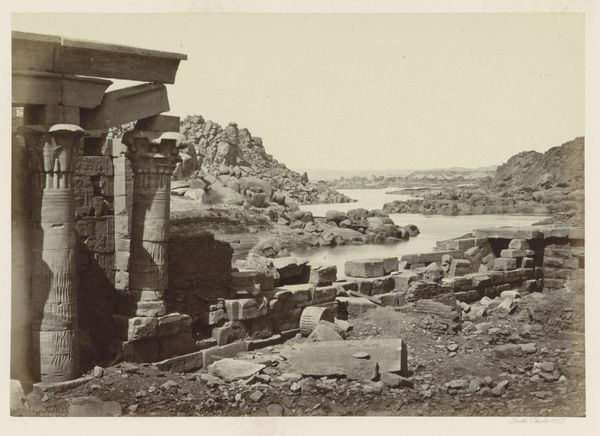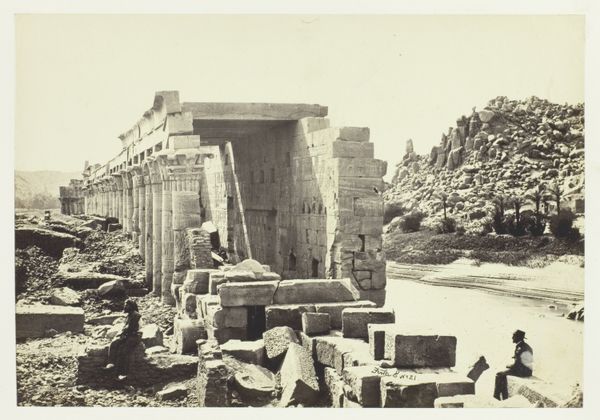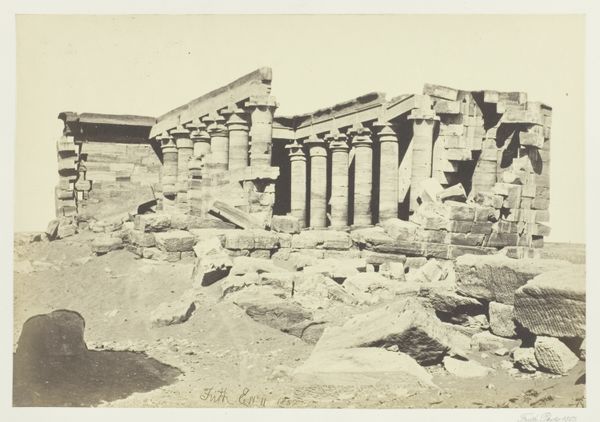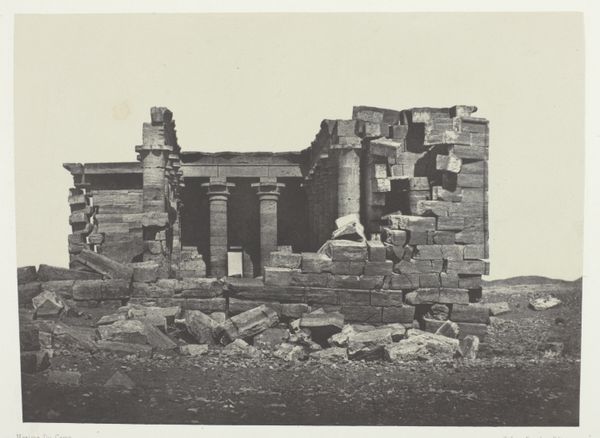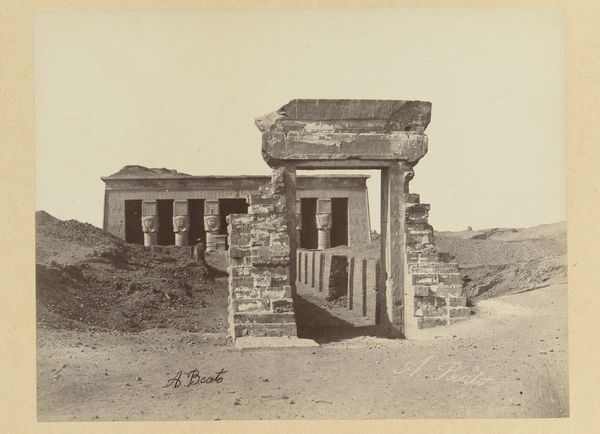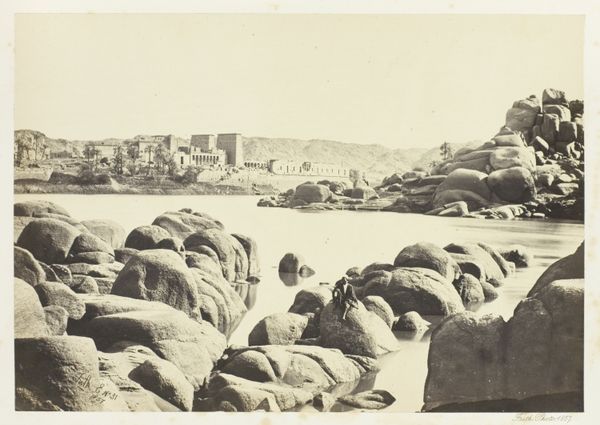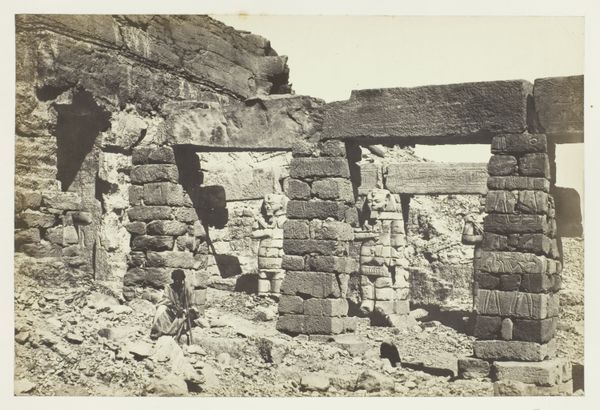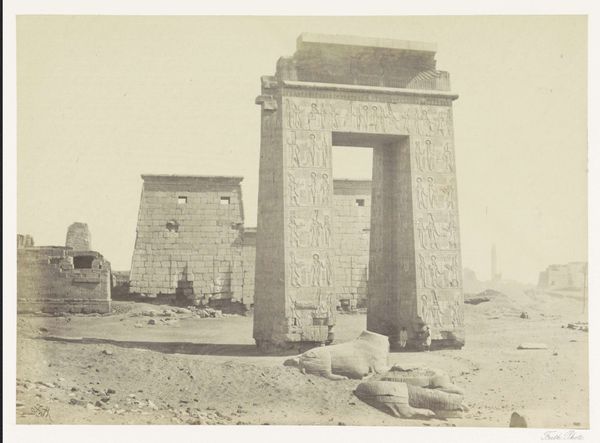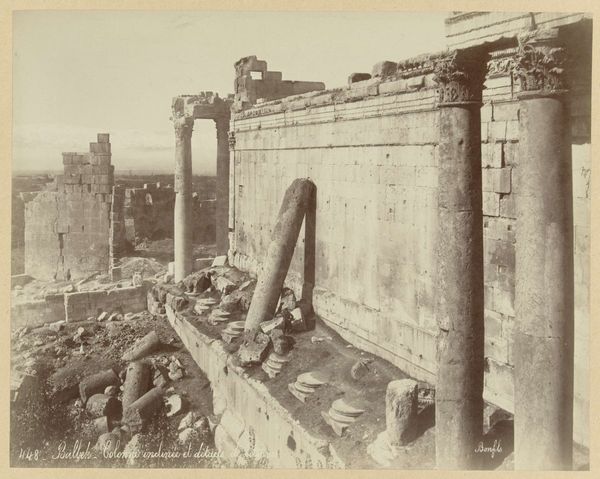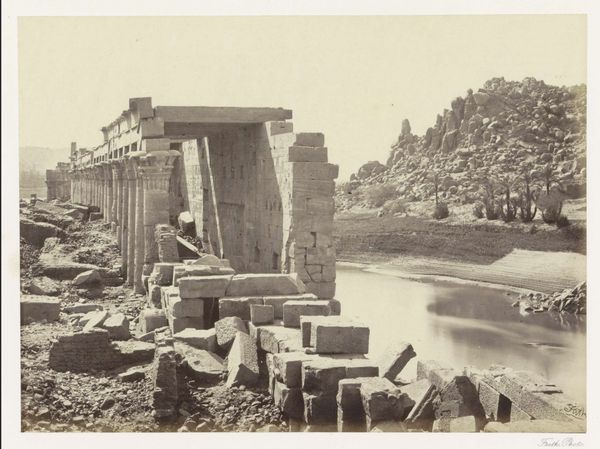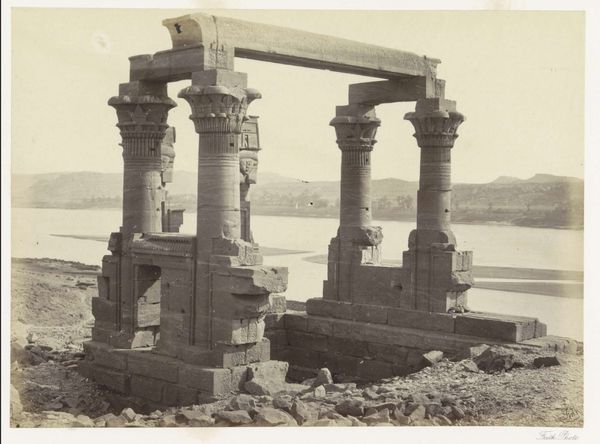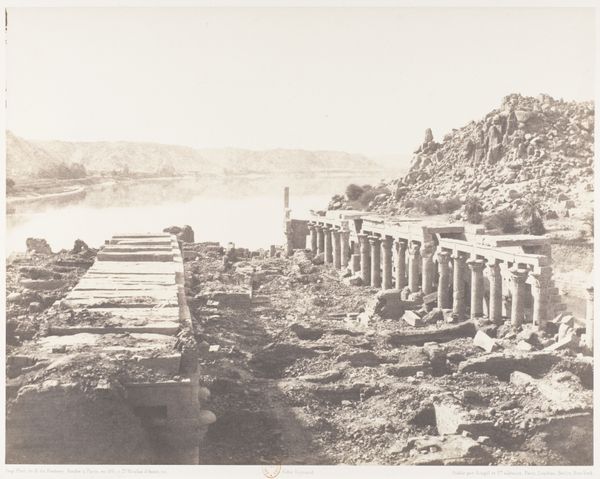
print, photography, site-specific, albumen-print
# print
#
landscape
#
ancient-egyptian-art
#
photography
#
egypt
#
england
#
site-specific
#
men
#
agriculture
#
albumen-print
Dimensions: 15.6 × 23.3 cm (image/paper); 29.2 × 42.6 cm (album page)
Copyright: Public Domain
Curator: Francis Frith created this albumen print, titled "View from Philae, Looking North," in 1857. The work offers a compelling view of ancient ruins alongside the natural landscape. What's your immediate reaction? Editor: Bleak grandeur. The albumen process gives it a sepia tone that feels ancient, almost ghostly. The composition, though, is really dynamic. The crumbling architecture leads the eye into the receding landscape. There’s a tension between the human-made structures and the rugged natural formations that's captivating. Curator: Indeed. The architecture shown would be structures erected to honor Isis. Philae was a crucial cult center, thought to be one of the burying locations of Osiris, deeply tied to renewal and rebirth symbolism within Egyptian religious traditions. Editor: The ruined state certainly speaks to that. Note how the artist used shadow. Look at how the strong horizontal lines and verticality of the pillars create depth, guiding your eye. I also think it establishes a somber mood in a very literal way, which enhances the overall emotional effect. Curator: I see the ruin in connection to the decline of pharaonic authority. Its visual emphasis echoes the fading power of the goddess, but there's more to it. The lotus and papyrus capitals are a clear visual marker for unification, representing Upper and Lower Egypt coming together. That Frith captured this as photography became increasingly accessible to England adds another layer of complex visual storytelling, no? Editor: Definitely. The albumen printing gives the ruins an almost ethereal quality, while also holding tight to photorealistic qualities that underscore the weight of history on this island in the Nile. Curator: Ultimately, this photograph encapsulates cultural continuity amid destruction, revealing lasting symbols from an era that continues to shape our perceptions. Editor: It's a poignant visual statement on time and transformation, isn't it?
Comments
No comments
Be the first to comment and join the conversation on the ultimate creative platform.
